The arid desert sands of Egypt are not the most likely of places to find whales.
But dozens of fossilised remains of prehistoric ancestors of the giant sea mammals have emerged from the shifting sands of the Egyptian Sahara.
Among them is an intact 37 million-year-old skeleton of a legged form of whale that measures more than 65 feet (20 metres) long.
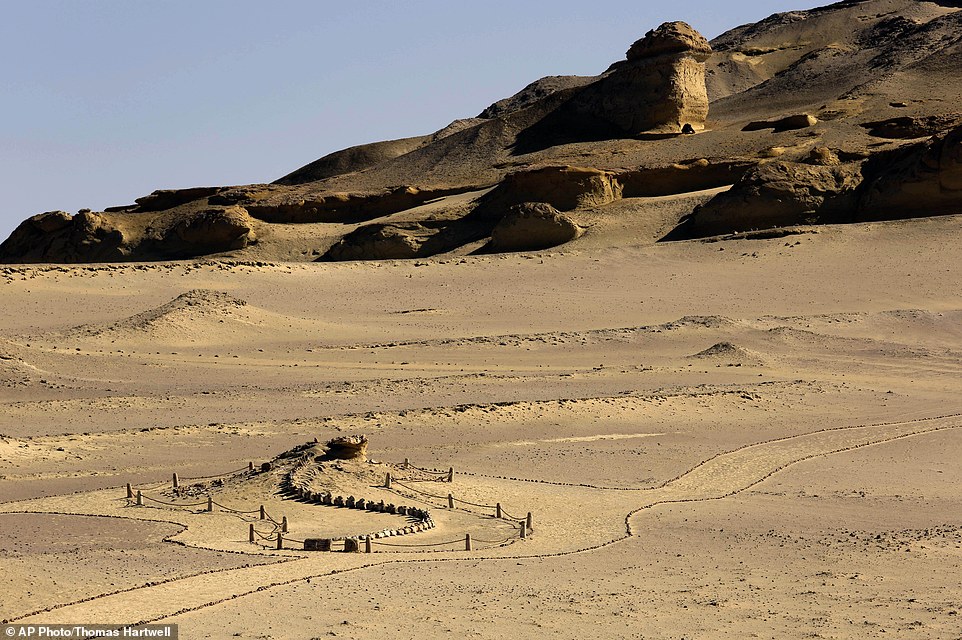
Dozens of fossilized whale bones have emerged from the Wati El Hitan in the Egyptian desert (pictured) and form the centre piece of a new museum that has been opened. Among them is an intact 37 million-year-old skeleton of a legged form of whale that measures more than 65 feet (20 metres) long
The fossils are providing scientists with new insights into how modern-day whales evolved from land mammals.
Officials have now officially opened a $2.17 billion (£1.5 billion) museum in the Valley of the Whales, which is known as Wadi Al-Hitan.
The area was once covered by a vast prehistoric ocean which has since vanished as sea levels have fallen and landmasses have moved.
To protect many of the fossils they have now been covered in a sand-coloured dome-shaped building that forms the museum.
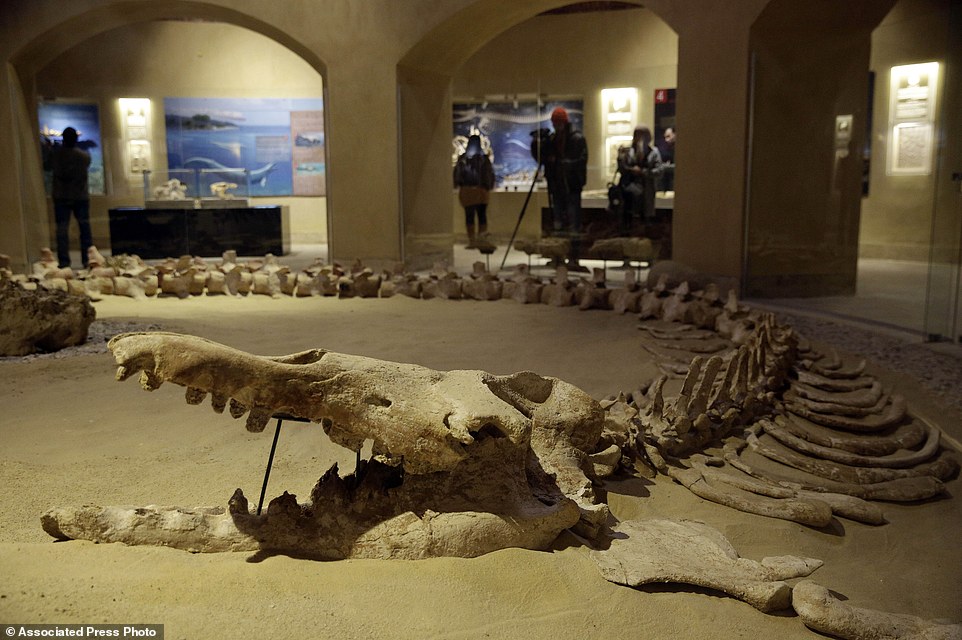
The largest intact Basilosaurus isis whale fossil – an early formed of ‘legged whale’ – is one of the key attractions at the new Fossils and Climate Change Museum in Egypt’s Valley of the Whales
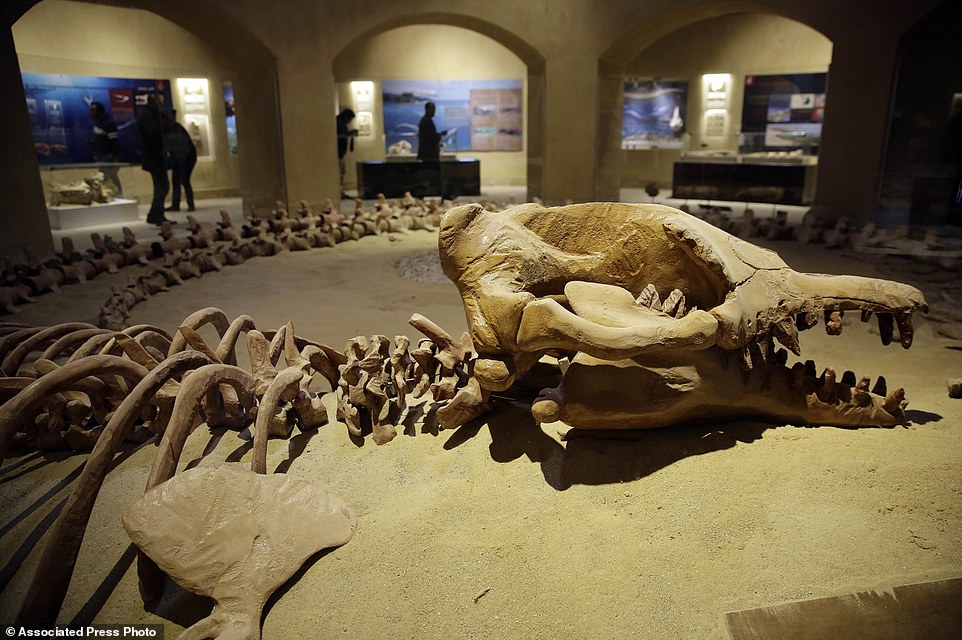
The largest intact Basulosaurus isis whale fossil was discovered in the shifting sands of the Egyptian desert. The $2.17 billion (£1.5 billion) museum was built around the fossils to help protect and preserve them
Fossilised remains from the fossils are exhibited in glass boxes while prehistoric tools – which attest to the presence of stone-age humans in the area thousands of years ago.
Gabriel Mikhail, architect of the new Fossils and Clmate Change Museum, said he had designed the building to it could blend in with its desert surroundings.
He said: ‘When you build something somewhere so beautiful and unique, it has to blend in with its surrounding … or it would be a crime against nature.
‘We are confident visitors will come,’
THE WHALE SKELETON THAT REVEALS HOW MAN EVOLVED TO WALK ON TWO LEGS
A whale that swam hundreds of miles up an African river after taking a wrong turn 17 million years ago is helping shed light on a key moment in human evolution.
Palaeontologists discovered the fossilised remains of the ancient ancestor to modern beaked whales in the middle of one of the harshest desert areas of Turkana, Kenya.
It has allowed scientists to pinpoint when the landscape in east Africa began to change as the land around the Great Rift Valley began to rise up.
This was a crucial moment in human evolution from primates as it created the dry open habitats that led our ape-like ancestors to walk upright for the first time.
They say that for the whale to have travelled so far inland in a river the area must have been much wetter, far flatter and dominated by forests.
Professor Louis Jacobs, a vertebrate palaeontologist at Southern Methodist University in Dallas who led the study, said: ‘The whale was stranded up river at a time when east Africa was at sea level and was covered with forest and jungle.
‘As that part of the continent rose up, that caused the climate to become drier and drier. So over millions of years, forest gave way to grasslands.
‘Primates evolved to adapt to grasslands and dry country. And that’s when – in human evolution – the primates started to walk upright.’
Ministers in Egypt are hoping the new museum can help to revive the country’s struggling tourism industry which has suffered due to the long running Islamic insurgency in the Sinai Peninsula.
Egypt’s tourism industry suffered a further blow by the suspected terror bombing that brought down the Russian airliner over Sinai last October, 𝓀𝒾𝓁𝓁ing all 224 people on board.
The Islamic State group has claimed responsibility for that attack.
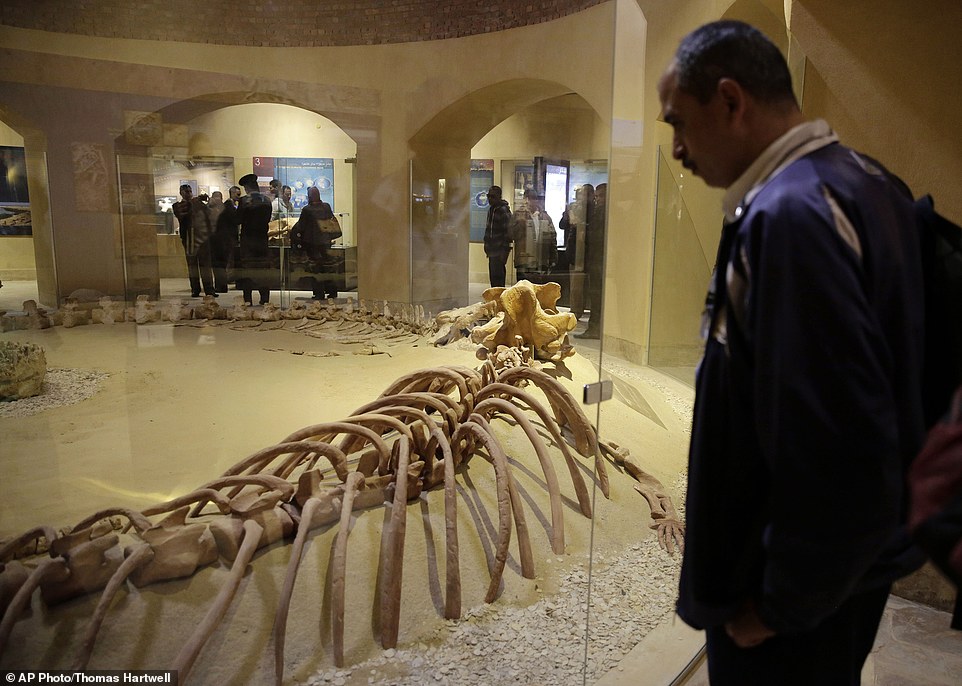
A visitor views the largest intact Basulosaurus isis whale fossil (pictured), which is on display at the Wati El Hitan Fossils and Climate Change Museum on the opening day. The fossils have proved invaluable to palaeontologists as they try to piece together the evolutionary history of modern-day sea mammals
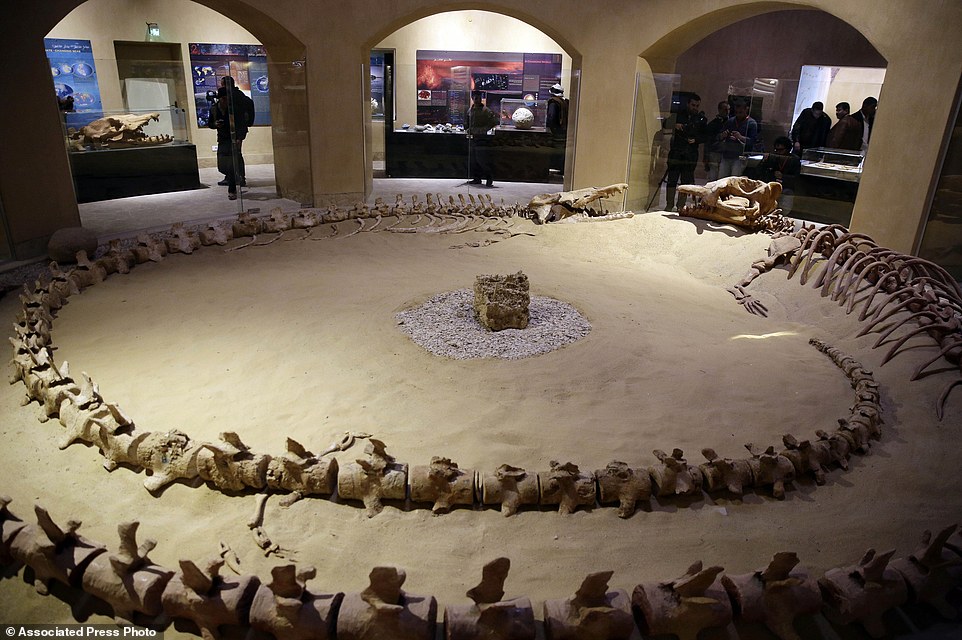
The giant fossil is one of the most complete Basulosaurus isis whale fossil’s to have been found. The species has earned the name ‘walking whale’ due to leg like limbs that are thought to have been a key evolutionary stage as whales evolved from land mammals

Egyptian Army soldiers stand guard outside the Wati El Hitan Fossils and Climate Change Museum a UNESCO natural World Heritage site (pictured). The Egyptian authorities are hoping the new museum may help to reinvigorate the country’s struggling tourism industry
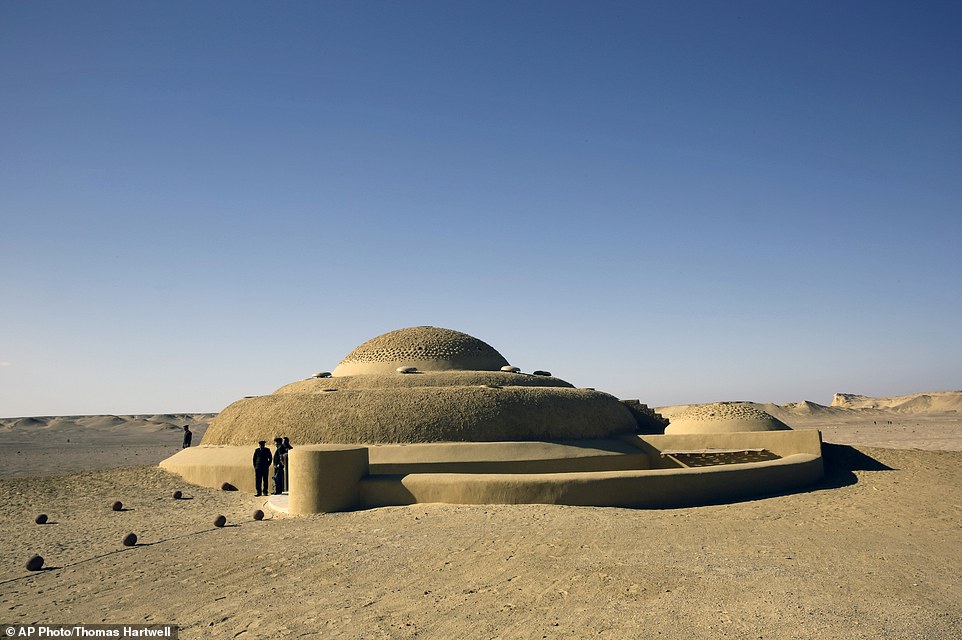
The sand-colored, dome-shaped museum is barely discernible in the breathtaking desert landscape that stretches all around (pictured)
The fossilised whales in the desert include the large Basilosaurus and the smaller Dorudon. They are both thought to be early species of whale that help to chart how they evolved.
But Environment Minister Khaled Fahmy cautioned against interpreting the museum’s opening as a ‘full endorsement of the theory of evolution,’ which conflicts with Islam.
‘That is an entirely different matter,’ he said. ‘We are still tied to our Islamic belief system.’

Architects designed the museum to blend into the surrounding desert but it is also hoped it will help to protect the rare fossils

The site where the fossils were found in the Egyptian Sahara (pictured) was once covered by ocean millions of years ago when these giant creatures would have ruled the seas
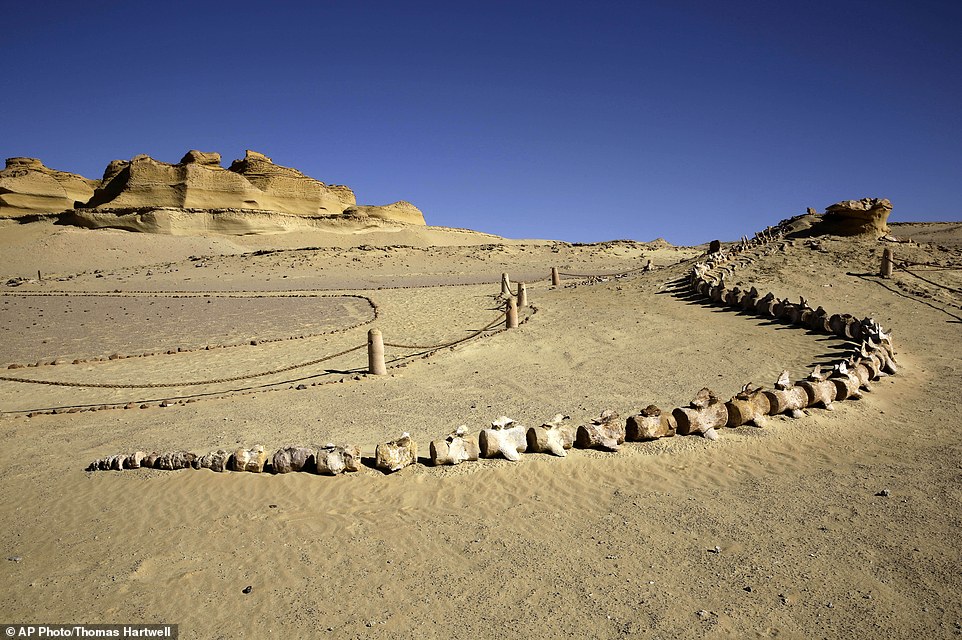
The fossilised bones have lain preserved under the sand in Wadi El Hitan (pictured) for millions of years and give a rare insight into the creatures that lived there when it was covered by ocean millions of years ago when sea levels were higher

While some of the fossils have been moved inside the museum, others can still be seen where they were found among the sand (pictured)
Soucre: thaistar24h.net





